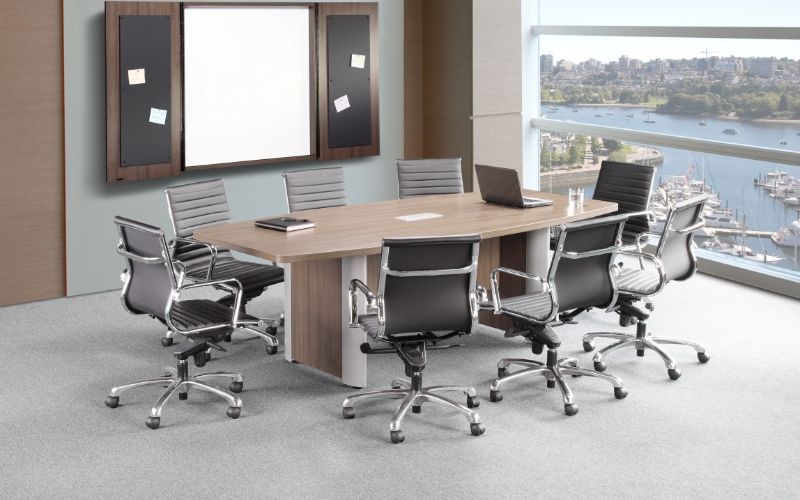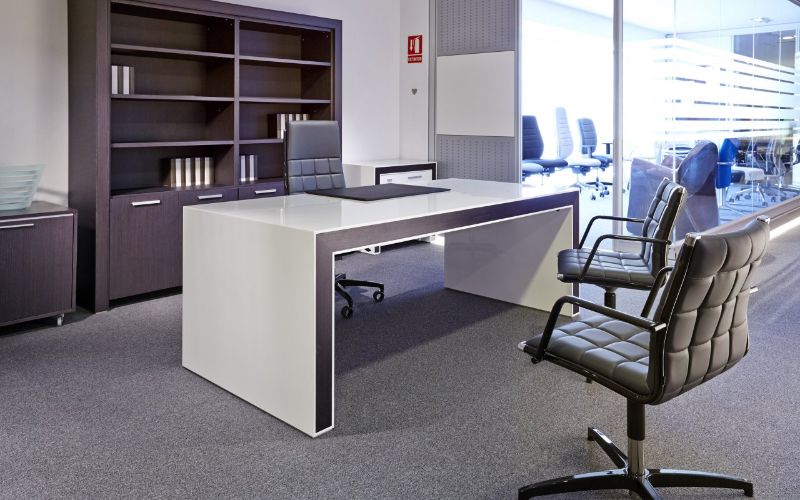Your workstation is where you spend a large portion of your day, so it’s crucial to design a space that’s both cosy and practical. To accomplish this, selecting the appropriate office furniture is essential. That’s because it can affect your productivity, health, and overall well-being, making it a decision that should not be taken lightly. That’s why we’ve created this precise guide for choosing the right office furniture for your workspace.
In this comprehensive guide, you will find everything you need to know about office furniture selection, from assessing your workspace and understanding the office furniture available, to factors such as ergonomics, style, budgeting, and maintenance. This article will give you all the details you need to make the right decision about the office furniture that is right for you.
Whether you’re setting up a new workspace or are simply looking to update your existing furniture, this guide is an invaluable resource that will help you achieve the perfect environment for your work. So let’s dive in and discover the ultimate guide to choosing the right office furniture for your workspace.
Factors To Choose the Right Office Furniture

Consider important factors such as materials, functionality, durability, and style to select the office furniture that meets the needs and preferences of your workspace. Before buying office furniture, keep the following points in mind.
Materials and Durability
Choose furniture made from high-quality materials that can withstand daily wear and tear, and is easy to clean and maintain. For office furniture, there are various types of materials that are commonly used. The following are some of the best common materials:
-
Wood
This is a popular choice for desks, chairs, and bookcases. Wood furniture provides a classic look and is often durable and heavy-duty.
-
Metal
Metal is commonly used in filing cabinets, bookcases, and desks. It provides a modern look and is often sturdy and durable.
-
Plastic
Plastic is a common choice for chairs, especially those used in waiting areas or for outdoor use. It is lightweight and easy to clean, but may not be as durable as other materials.
-
Glass
Furniture designers use glass for tables, desks, and other surfaces. It provides a sleek and modern look, but may not be as durable as other materials.
Durability

When choosing office furniture, durability is a significant aspect to consider. You want furniture that will resist daily use’s wear and tear and endure for many years.When considering durability, look at factors such as
-
Materials Used
As mentioned above, different materials have different levels of durability. For example, wood is generally more durable than plastic.
-
Quality Of Construction
Well-constructed furniture is less likely to break or wear down quickly than furniture that is poorly constructed.
-
ProperCleaning
Proper maintenance, such as regular cleaning and repairs, can help extend the life of your office furniture.
Style and Aesthetics

The style and aesthetics of a workplace play a crucial role in creating a productive environment. A well-designed workspace can enhance employee satisfaction, creativity, and motivation, while also projecting a professional image to clients and visitors.
Trending office furniture styles
For office furniture styles, there are several trends to consider. By using these styles in your workspace, you can create a modern, inviting atmosphere that promotes productivity and well-being.
- Minimalist designs are becoming increasingly popular, with simple, sleek pieces that prioritize functionality over decoration.
- Scandinavian-inspired furniture is also on-trend, with its clean lines, light wood finishes, and cozy textiles.
- There is a growing interest in sustainable and eco-friendly furniture options, with a focus on materials like recycled plastic, bamboo, and reclaimed wood.
Budgeting
Budgeting is an essential aspect of managing any workspace, whether it’s a small home office or a large corporate space. This can help you achieve your business goals while also maintaining financial stability and sustainability.
- It’s important to consider all the factors that can affect the cost of your workspace, such as location, size, and arrangement.
- By creating a well-planned budget and implementing cost-saving strategies, you can ensure that your workspace operates efficiently and within your financial means.
Maintenance

Maintaining your office furniture is essential for ensuring its longevity and preserving its appearance. Regular maintenance can also prevent more significant problems from developing, which can be costly to repair or replace.
- Proper maintenance can include dusting and cleaning your furniture regularly,
- Using protective covers or pads to prevent scratches and damage, and tightening screws and bolts as needed.
Types Of Office Furniture
When it comes to office furniture, here are some types that you’ll need to consider.
Desks And Workstations
Desks and workstations are essential for providing a surface to work on and can be customized to fit your specific needs.

Chairs
These are essential for providing support and convenience during long periods of sitting, and it is critical to select one that is both ergonomic and trendy.
Ergonomics
Ergonomic furniture provides comfort and support to the body while performing daily activities such as sitting, standing, and working at a desk. Using ergonomic furniture can improve productivity and enhance overall health and well-being.
Storage
The storage solutions like filing cabinets, shelves, and bookcases can help keep your workspace organized and clutter-free.
Accessories
Using accessories and add-ons such as desk lamps, monitor arms, and cable management systems can make a big difference in improving your productivity and comfort.
Tips for creating a healthy workspace:

Besides choosing office furniture, here are some tips for creating a healthy workspace:
-
Take breaks
Take frequent breaks during the day to release tension, move around, and rest your eyes.
-
Position your computer properly
Place your computer screen at eye level, and position your keyboard and mouse so that your arms are in a relaxed state and your shoulders are not hunched.
-
Sit properly
Sit with your back straight, your feet flat on the floor, and your arms supported by armrests or your desk.
-
Use proper lighting
Make sure your desk has adequate lighting to prevent headaches and eye strain.
-
Reduce clutter
To lessen distractions and increase focus, keep your desk tidy and organised.
Conclusion
Creating a comfortable and functional workspace requires careful consideration when choosing office furniture. Your productivity, health, and overall well-being all are affected by this decision, making it essential to assess your workspace, understand the available options and consider factors such as materials, durability, style, budget, and maintenance. By using the right office furniture, you can create an environment that enhances employee satisfaction, productivity, and creativity. Remember to choose high-quality, durable materials, create a budget, and maintain your office furniture to ensure longevity. After reading this comprehensive guide you will understand that creating a healthy workspace that promotes well-being is vital for a productive and fulfilling work life.




